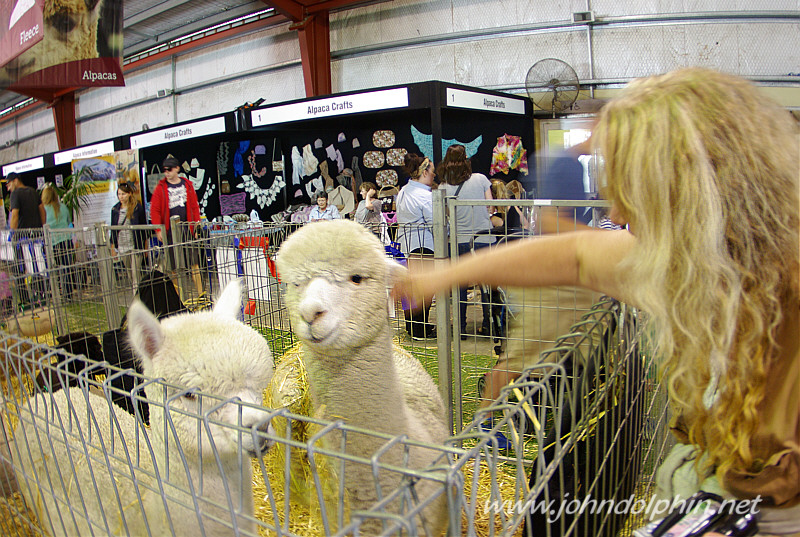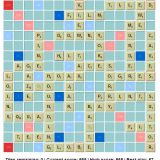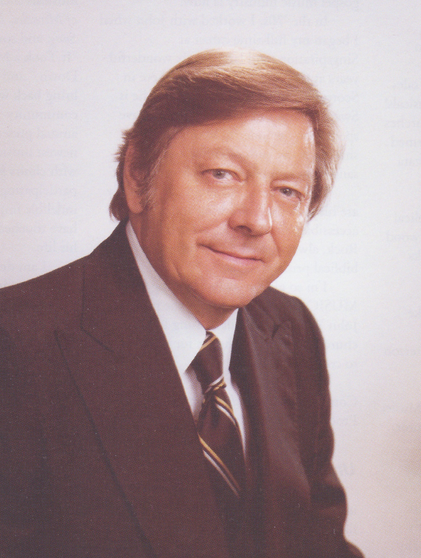Joris Jansen Rapelje from The Bosley Family Tree
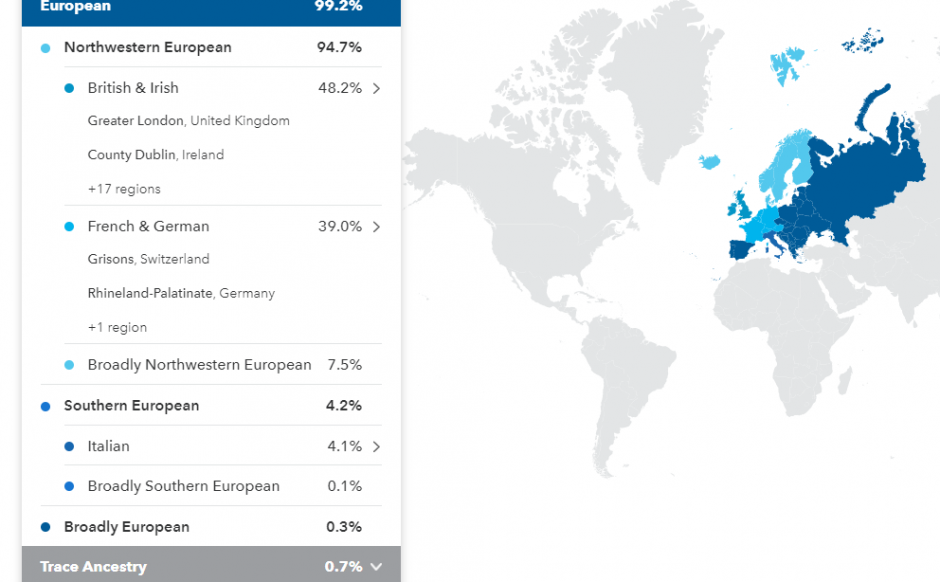
According to my ever-changing 23andMe results, my ancestry is mostly European. Mostly British and I have found a lot of German, so when France, Belgium, Italy, and recently found Norwegian heritage pops up on my Ancestry, (Hopefully, I learn more about the Norwegian later) I like to investigate deeper. One particular name stood out and had quite a story. Joris Jansen Rapelje. What called my attention was that he was a French Huguenot – and I like to know my Protestant heritage.
It starts on my Dad’s side, Julian Bosley, from his mother Ethel Boyce. (Images opens larger in a new tab).
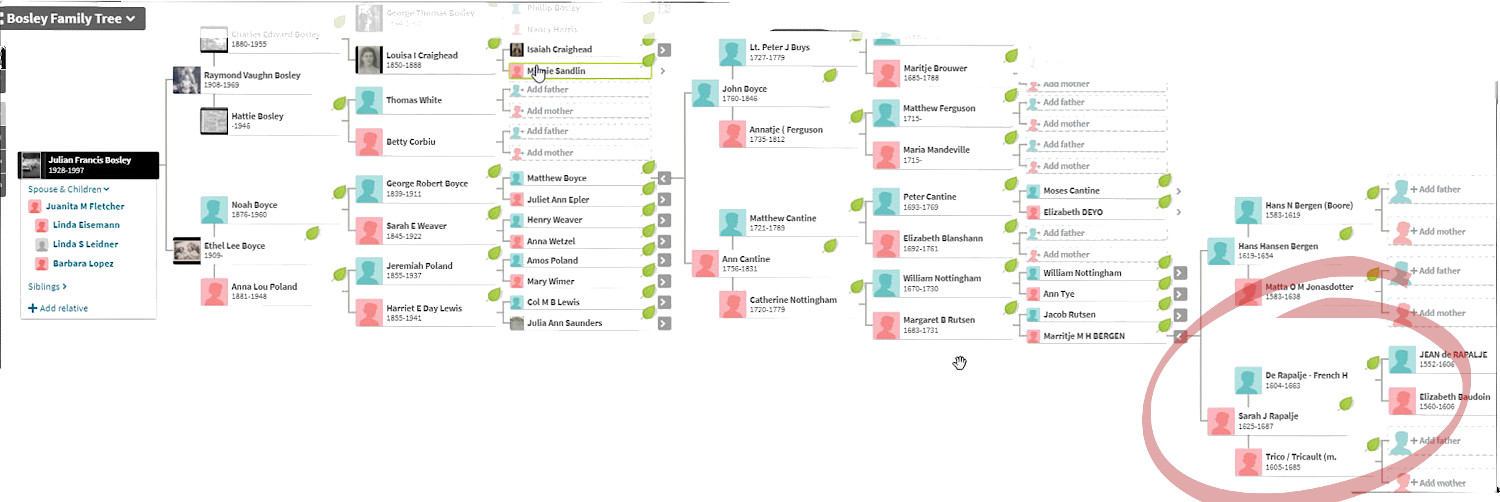
So the above chart shows how it progresses from Dad, to Grandmom, her father Noah Boyce and on and on.
According to Wikipedia
Joris Jansen Rapelje (28 April 1604 – 21 February 1662/63) was a member of the Council of Twelve Men in the Dutch West India Company colony of New Netherland. He and his wife Catalina (Catalyntje) Trico (1605–1689) were among the earliest settlers in New Netherland.
Joris Rapelje and Catalina Trico were married 21 January 1624, at the Walloon Church of Amsterdam. Rapelje, an illiterate 19-year-old textile worker whose origin was noted in the registry as ‘Valencenne’ (Valenciennes, Spanish Netherlands), and his 18-year-bride, had no family present to witness the ceremony. Four days later, on 25 January, the couple departed from Amsterdam, bound for North America.[1] They were traveling aboard the first ships to bring immigrants and workers to New Netherland.
The Rapalje family were first employed at Fort Orange, in what would eventually become Albany, New York. Fort Orange was being erected by the Dutch West India Company as a trading post on the west bank of the Hudson River. It became the company’s official outpost in the upper Hudson Valley. The families aboard these ships were principally Walloons, French-speaking residents of Valenciennes, Roubaix, Hainaut and related sites, now in Belgium’s province of Wallonia and France’s region of Nord-Pas-de-Calais, but then part of the Spanish Netherlands.[2]
By 1626, Dutch authorities had relocated most settlers from Fort Orange to Fort Amsterdam at the southern end of Manhattan Island. The Rapeljes established a residence near the East River, and were among the earliest purchasers of land in Manhattan, later building two houses on Pearl Street near the Fort. In 1637, Rapalje purchased about 335 acres (1.36 km2) around Wallabout Bay in what is now Brooklyn. His son-in-law Hans Hansen Bergen acquired a large tract adjoining Rapelje’s tract. Today the land where the Rapalje’s farm stood is the Brooklyn Navy Yard. In 1641, Rapalje was one of the Council of Twelve Men representing Manhattan, Breukelen and Pavonia. From 1655 through 1660, he was a magistrate of Brooklyn.[3] He died in Breuckelen, New Netherland.[4]
Joris Jansen Rapelje and Catalina Trico were the parents of 11 children, including Sarah Rapelje, the first child of European parentage born in New Netherland. Sarah Rapelje’s chair is in the collection of the Museum of the City of New York, and is thought to have been brought to New Netherland by the family.
Their daughter Annetje married Martin Ryerson; they had many children including Cathalyntie who married Paulus Vanderbeek, Grandson of Master Paulus Vanderbeeck, a DWIC ship surgeon and Brooklyn’s first resident doctor (who was also recorded in 1645 court records as having knocked Catalina Trico to the ground).Their daughter Jannetje married another Vanderbeek; Rem Jansen Vanderbeek, whose descendants took the name Remsen and who became a leading New York mercantile family.[5]
Because of the number of their descendants, author Russell Shorto has called Joris Jansen and his wife Catalina “the Adam and Eve” of New Netherland as the number of their descendants has been estimated at about a million.
Brooklyn’s Rapelye Street is named for the family. The spelling of the Rapelje family name varied over the years to include Rapelye, Rapalje, Rapareilliet, Raparlié, Rapalyea, Raplee, Rapelyea, Rapeleye, Rappleyea as well as others.[6]
Rapelje, Montana is named for a family descendant, J. M. Rapelje, general manager and vice president of the Northern Pacific Railway.[7]
Another family descendant, Capt. Daniel Rapelje, founded the settlement which became St. Thomas, Ontario.
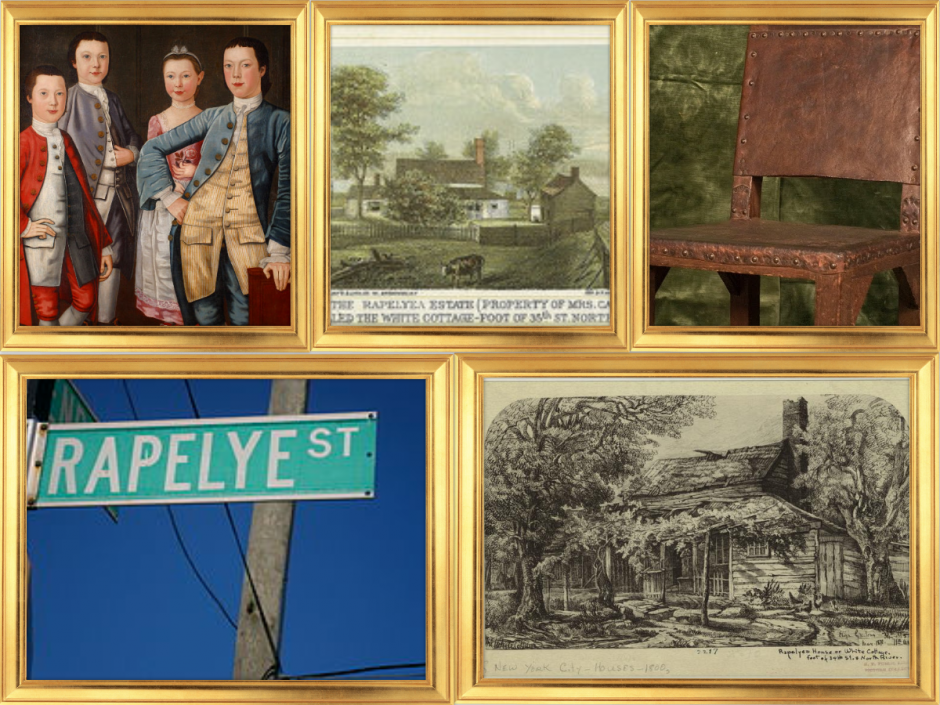
A similar story can be found in Ancestry:
Joris Jansen Rapalje*; b. Apr. 28, 1604 in Valenciennes; d. Feb. 21, 1662, Brooklyn NY. See the Descendants of Jean Rapareillet. Also see The Ancestors of Maria Vanderveer.
- m. Catalyntie Trico* b. 1605 in Pry (Pris or Prische), Dept. Nord, France; d. Sep. 11, 1689, in Wallabout, Brooklyn, NY.
- Joris and Catalyntie had 11 children:
- Sarah Rapalje*; b. June 7, 1625; d. 1685
- m1. Hans Hansen Bergen*
- m2. Tunis G. Bogart
- Maria Rapalje; b. Mar. 11, 1627; d. 1685
- m. Michael Vandervoort, see the Vandervoort genealogy.
- Janetje Rapalje; b. Aug. 18, 1628
- m. Rem Vanderbeek
- Judith Rapalje*; b. July 5, 1635; d. 1726
- m. Pieter Pietersen Van Nest*
- Jan Rapalje; b. Aug 28, 1637; d. 1663
- m. Maria Frederickse (Lubertson)
- Jacob Rapalje: b. May 28, 1639; shot and killed by Indians while on the front steps of the Tap House on Pearl Street.
- Catalina Rapalje; b. Mar. 21, 1641.
- m. Jeremias Westerhout
- Jeronimus Rapalje; b. June 25, 1642; d. 1690
- m. Anna Denise
- Annetje Rapalje; b. Feb.8. 1646.
- m1. Marten Ryerson, see the Ryerson Genealogy.
- m2. Joost Franz.
- Elisabeth Rapalje; b. Mar. 28, 1648; d. 1712.
- m. Dirck Hoogelandt.
- Daniel Rapalje (1650-1725).
- m. Sarah Klock.
- Sarah Rapalje*; b. June 7, 1625; d. 1685
Brief Biography:Joris Jansen Rapalje*; b. Apr. 28, 1604 in Valenciennes. a town in Northern France, long considered a Protestant stronghold in the province of Hainaut, but was conquered by Spain in the 1500s. Then, in 1677, under Louis XIV, Valenciennes was recaptured for France. Joris was born there during the time of Spanish occupation and his family was surely under duress.
A microfilmed copy of these records, now available, shows by the handwriting that the same priest recorded the baptism of Nicolas in 1598 and of his brother Georges (Joris) in 1604. He called only the latter illegitimate, as he did two per cent of the babies he baptized. See on-line The Ancestors of Maria Vanderveer, and select the 8th generation page and scroll down to the item #138 on “Joris Janszen Rapelje” [sic]. There is a list of quotes from an article by Hugh T. Law: Chapter 7, Ancestors Traced to France: Joris Jansen De Rapalje and Catharine Trico,” How To Trace Your Ancestors to Europe, 1987, pp.84~86″. Thus, this indicates that his genetic mother was not Elizabeth Baudoin c1560-1606, as indicated above. Therefore, the color of her block in the pedigree chart has been adjusted to gray to indicate that she may not be a genetic ancestor.
Joris was the youngest child of Jean Rapareilliet*, probably born to a woman other than Jean’s wife, Elizabeth Baudoin, but possibly adopted by her. Joris did not know his father, since his father, Jean, died when he was less than 2 years old. He also would not have known Elizabeth, since she also died in 1606. It is not known if he ever knew his genetic mother, but it seems possible that his father would have employed the services of some woman, perhaps a mistress, perhaps Joris’ genetic mother, to raise his family. Jean was born about 1552 in Valenciennes, Nord, France. Jean died after 1602. One source says buried on 23 Feb 1606 in Valenciennes, France. In about 1599, Jean married Elizabeth Baudoin, and she birthed 8 and raised 9 of the following children until she died in 1606:
- Jehenne Rapareilliet (c. Aug 1578-___?)
- Marie Rapareilliet (c. Jul 1580-___?)
- Jeanne Rapareilliet (c. Dec 1590-___?)
- Olivier Rapareilliet (c. Feb 1594-___?)
- Anne Rapareilliet(c. Sep 1595-___?)
- Francois Rapareilliet (c. Nov 1596-___?)
- Nicholaes Rapareilliet (c. Jul 1598-___?)
- Jean Rapareilliet, Jr. (1600-1600), died in infancy.
- Joris Janszen Rapareilliet* (1604-1662), indicated as “illegitimate”.
Joris’ surname, Rapalje, was a vulgar “Dutchification” of the French or Walloon name “Rapareillet”. The variations of the spelling of his surname suggests that, although born in the Spanish occupied Hainaut Province of France, he may have spent some time in Walloonia, Flanders, now a part of Belgium. Once in America at New Amsterdam, he was said to have come from La Rochelle, France, indicating that he may have lived there as well, or at least had some trade in La Rochelle (possibly through Catalyntie’s father). His middle name, Jansen, suggests that he was the son of Jan (in Dutch), or Jean (in French).
Joris and Catalyntie Trico were married in the Walloon (Protestant – Huguenot) Church at Amsterdam, Netherlands, Jan. 21, 1623/24. According to the book, Island at the Center of the World, by Russell Shorto (Doubleday 2004) their marriage was only four days before their ship sailed to America. Catalyntie’s maiden name, Trico, is also a “Dutchification” of Tricault, her original French surname. The possibility does exist that they first came to America on separate ships, he on the Unity in 1623, and she on the Niew Nederlandt in 1624, or vice-versa. Another possibility is that Joris first arrived in 1623 on the Unity, then returned to Holland to marry Catalyntie and they both returned to New Amsterdam on the Niew Nederlandt in 1624. In the Bergen family history, published in 1876, it is asserted that they both came to the “Mannatans” on the Unity, commanded by Arien Jorsie, and were part of 18 families which remained on-board to go to Fort Orangie (Now Albany), where they lived until 1626. New research, since the publication of the Bergen Book, has Catalyntie arriving on the Niew Nederlandt in 1624, which brought a number of Huguenot refugees from La Rochelle.
Joris and Catalyntie lived in what is now Albany until 1626, when she and her husband moved to what is now lower Manhattan after Gov. Peter Minuit in May, 1626, purchased Manhattan Island from the Indians. After a few years of farming, Joris and Catalynsie opened a small tavern or “tap house” on the north side of what is now Pearl Street, abutting on the Fort, where they managed the tap-house and grew vegetables and served their guests. Later, their daughter Sarah and son-in-law, Hans Hansen Bergen, took over the tap-house, but Hans died in 1654. Joris and his wife moved to a farm in Brooklyn, where he had acquired a number of properties, in about 1655, in the area now occupied by the Brooklyn Navy Yard.
Joris died sometime before 1680, since from that point onward Catalyntie was known as the “old widow from Valenciennes” as she continued to raise her large extended family and grow vegetables on her farm in Brooklyn. In 1680 a group of Labidist visitors reported that, in 1679, she was living alone, growing flowers and vegetables and had 145 descendants, soon to be 150, alive at that time.
So exciting to learn family history. Looking to a very big family reunion in heaven.
Links:

